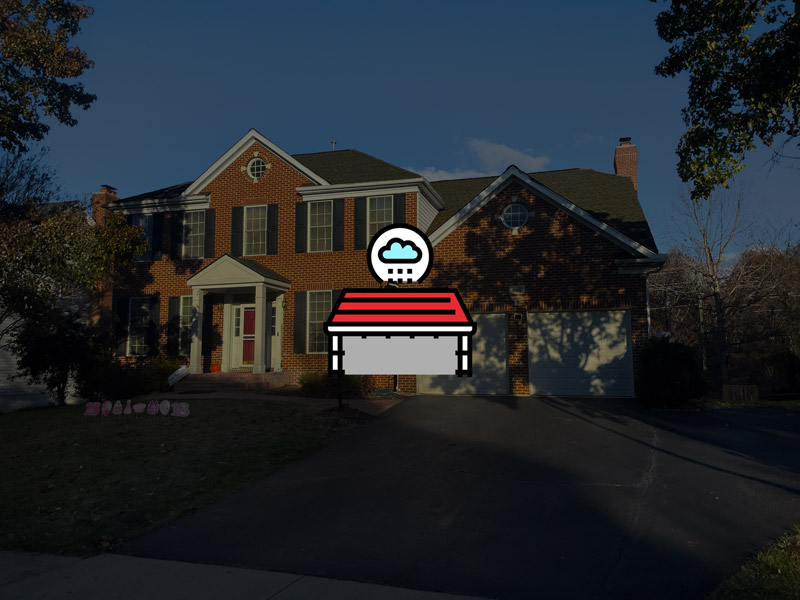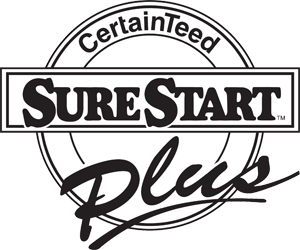Water Leak in Attic: Causes, Detection, and Solutions
When it comes to maintaining the integrity of your home, addressing water leaks in the attic is of paramount importance. Neglecting these leaks can lead to severe damage, compromising the structural stability of your house and even posing health risks. By promptly identifying and addressing water leaks, you can prevent further damage and avoid costly repairs down the line.

Identifying the Water Leak
Locating the Source of the Water Leak
When dealing with a water leak in the attic, the first step is to pinpoint its source. By identifying the exact location, you can effectively address the issue and prevent further damage. Here are a few key steps to help you locate the source of the water leak:
- Visual Inspection: Carefully examine the attic area to look for visible signs of water intrusion. Look for water stains, discoloration, or wet spots on the ceiling, walls, and insulation. Pay close attention to areas near roof penetrations such as chimneys, vents, and skylights.
- Follow the Trail: If you notice water stains or dampness, trace the trail of water back to its origin. Keep in mind that water can travel along beams, rafters, or piping, so the source may not always be directly above the visible signs.
Utilizing Visual Inspections and Moisture Detectors
- Visual Inspections: Inspect the attic during or after rainfall to observe any active leaks. Look for areas where water is seeping through, dripping, or forming puddles. Use a flashlight to thoroughly examine dark corners and hard-to-reach areas.
- Moisture Detectors: Consider using moisture detection tools such as moisture meters or thermal imaging cameras. These devices can help identify hidden moisture pockets and potential sources of leaks that may not be visible to the naked eye.
Remember, while locating the source of the water leak is crucial, it’s important to exercise caution and prioritize safety during the inspection process. If you encounter any structural concerns or feel unsure, it’s best to consult a professional roofing contractor who can provide expert guidance and assistance.

Assessing the Severity of the Leak
Determining the Extent of Damage Caused by the Water Leak
To effectively address a water leak in the attic, it’s essential to assess the extent of the damage it has caused. By understanding the severity, you can take appropriate measures to mitigate further harm. Consider the following steps:
- Inspect Structural Components: Examine the attic’s structural elements, such as beams, rafters, and trusses, for signs of water damage. Look for wood rot, warping, or decay caused by prolonged exposure to moisture.
- Check Insulation: Insulation can retain water and become a breeding ground for mold and mildew. Inspect the insulation for signs of dampness, sagging, or discoloration, as these indicate potential water infiltration.
Understanding the Potential Risks and Consequences of Neglecting the Issue
- Mold Growth: A water leak in the attic creates a conducive environment for mold and mildew to flourish. This can lead to respiratory issues, allergies, and other health problems for the occupants of the house.
- Structural Damage: Prolonged exposure to water can compromise the structural integrity of your home. Wooden components may weaken, and sheetrock or plaster ceilings may deteriorate, risking the stability of the entire structure.
- Electrical Hazards: Water leaks in the attic increase the risk of electrical hazards. If the leak reaches electrical wiring or fixtures, it can lead to short circuits, malfunctions, or even fires.
- Decreased Energy Efficiency: Attic water leaks can cause insulation to lose its effectiveness, leading to energy wastage and increased utility bills. Properly addressing the leak can help restore energy efficiency in your home.

Fixing the Water Leak
Temporary Fixes to Prevent Further Damage
When faced with a water leak in the attic, it’s crucial to implement temporary fixes to mitigate further damage until a permanent solution can be applied. Consider the following steps:
- Contain the Leak: Place buckets or containers strategically to collect the leaking water and prevent it from spreading to other areas. This helps minimize water damage to your home’s interior.
- Patching or Sealing: If the source of the leak is identifiable, apply a temporary sealant or patch to the affected area. This can be done using roofing cement, silicone caulk, or a waterproof sealant appropriate for the specific surface.
Permanent Solutions to Address the Root Cause of the Leak
While temporary fixes provide immediate relief, it’s essential to address the root cause of the water leak to prevent future issues. Consider the following permanent solutions:
- Roof Repair or Replacement: If the leak is due to damaged or missing shingles, cracked flashing, or deteriorated roof valleys, it may be necessary to repair or replace the affected roofing components. Consult a professional roofing contractor to assess the extent of the damage and recommend the most appropriate course of action.
- Gutters and Downspouts Maintenance: Clogged gutters and downspouts can contribute to water leaks in the attic. Ensure proper maintenance by regularly cleaning out debris, inspecting for any damage, and ensuring proper water flow away from the house.
- Addressing Ventilation Issues: Inadequate attic ventilation can lead to moisture buildup, increasing the chances of a water leak. Consider installing or improving ventilation systems such as ridge vents, soffit vents, or powered attic fans to promote air circulation and reduce humidity.

Roof Replacement Considerations
Factors to Consider When Determining the Lifespan of a Roof
The lifespan of a roof depends on various factors that can influence its durability and longevity. When assessing whether a roof replacement is necessary, consider the following factors:
- Material Quality: The quality of the roofing material used during installation significantly affects its lifespan. High-quality materials tend to be more durable and withstand the elements better than lower-quality options.
- Climate and Weather Conditions: The climate in which your home is located plays a crucial role in roof lifespan. Extreme temperatures, high humidity, heavy rainfall, and frequent exposure to harsh weather elements can accelerate wear and tear.
- Maintenance and Upkeep: Regular roof maintenance, such as cleaning gutters, removing debris, and addressing minor issues promptly, can prolong the lifespan of your roof. Neglecting maintenance can lead to premature deterioration and reduce its overall durability.
How to Assess the Condition of Your Roof and Determine if Replacement is Necessary
- Visual Inspection: Conduct a thorough visual inspection of your roof’s exterior. Look for signs of damage, such as cracked, curling, or missing shingles, deteriorating flashing, or extensive granule loss. Water leaks in the attic can indicate more significant problems.
- Professional Roof Inspection: Engage a professional roofing contractor to perform a comprehensive roof inspection. They have the expertise to identify hidden issues, assess the overall condition of the roof, and provide recommendations for repair or replacement.
- Age of the Roof: Consider the age of your roof. Different roofing materials have varying lifespans. Generally, asphalt shingle roofs last around 20-25 years, while metal roofs can endure 40-70 years, and slate or tile roofs can last over a century.
Average Lifespan of Different Roofing Materials
- Asphalt Shingles: The most common roofing material, asphalt shingles, typically have a lifespan of 20-25 years. However, factors like climate and maintenance can affect their longevity.
- Metal Roofs: Metal roofs are known for their durability, with an average lifespan of 40-70 years. They are resistant to weather damage and offer excellent longevity.
- Slate and Tile Roofs: Slate and tile roofs are renowned for their longevity, often lasting over a century. With proper maintenance, these materials can endure for generations.

Hiring a Professional Roofing Contractor
Importance of Hiring an Experienced and Licensed Roofing Contractor
When dealing with a water leak in the attic, it’s crucial to hire an experienced and licensed roofing contractor. Here’s why:
- Expertise and Knowledge: Experienced contractors possess in-depth knowledge of roofing systems and have extensive hands-on experience. They can accurately diagnose the cause of the water leak, identify underlying issues, and provide effective solutions.
- Quality Workmanship: Licensed contractors adhere to industry standards and regulations, ensuring high-quality workmanship. They use proper techniques, materials, and equipment to address the water leak, ensuring long-lasting repairs and minimizing the risk of future issues.
- Safety and Insurance: Professional roofing contractors prioritize safety during the repair or replacement process. They carry liability insurance, protecting you and your property in case of accidents or damage during the project.
Qualities to Look for in a Reliable Roofing Professional
When hiring a roofing contractor, consider the following qualities:
- Reputation and Reviews: Check for positive customer reviews, testimonials, and referrals to gauge the contractor’s reputation. A reliable contractor will have a track record of satisfied customers and a good standing in the industry.
- Licensing and Insurance: Ensure the contractor is licensed, bonded, and insured. Request proof of insurance coverage and verify their license information to protect yourself from liability.
- Experience and Specialization: Look for contractors with experience in dealing with water leaks and attic-related issues. Specialized expertise in roofing systems will ensure they can handle the specific challenges associated with your situation.
Questions to Ask During the Hiring Process
- Are you licensed and insured?
- How many years of experience do you have in the roofing industry?
- Have you worked on projects involving water leaks in attics before?
- Can you provide references or examples of similar projects you have completed?
- What warranties or guarantees do you offer for your work?
View More Articles
Please Share!










